The night sky has always held a sense of mystery and wonder, and few celestial events capture our imagination quite like meteor showers. These captivating displays of shooting stars have fascinated humans for centuries, inspiring countless stories and myths. Yet, despite our fascination, there are still many unanswered questions surrounding the origins and behavior of meteor showers. In this article, we will delve into the enigmatic world of meteor showers, exploring the perplexing phenomena and unresolved mysteries that continue to baffle scientists. Join us on this journey as we strive to unravel the secrets of these mesmerizing cosmic spectacles.
The Origins of Meteor Showers
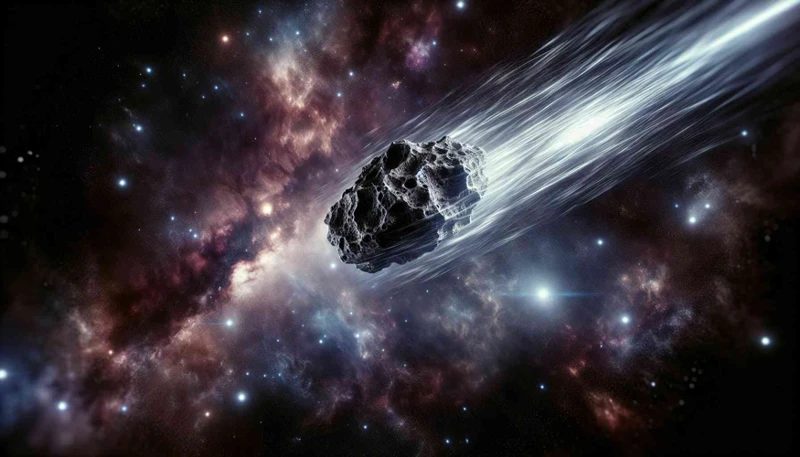
Meteor showers have long captivated observers with their spectacular displays of shooting stars streaking across the night sky. But where do these mesmerizing celestial events originate? Scientists believe that the progenitors of meteor showers can be traced back to two primary sources: comets and the asteroid belt. Comets, composed of a mixture of ice, dust, and rocky debris, are thought to play a significant role in the formation of meteor showers. As comets orbit the Sun, they leave behind trails of debris in their wake, known as meteoroids. When Earth’s orbit intersects with these debris trails, the meteoroids enter our atmosphere, creating the dazzling streaks of light we observe during meteor showers. This connection between meteor showers and comets is further supported by the fact that the timing of some meteor showers coincides with the orbits of known comets. Additionally, the asteroid belt, situated between Mars and Jupiter, is considered another potential source for meteor showers. Collisions between asteroids can produce fragments that, over time, find their way into Earth’s atmosphere during specific periods, resulting in meteor showers. With ongoing research and advancements in space exploration, scientists continue to uncover more about the fascinating origins of meteor showers and their connections to celestial bodies in our solar system. To learn more about the relationship between comets and meteor showers, check out our article “Meteor Showers and Comets: Exploring the Intriguing Connection.”
1.1 Comets as the Progenitors
Comets hold a fascinating role as potential progenitors of meteor showers. These celestial objects, composed of a mixture of ice, dust, and rocky debris, have long been associated with the creation of meteoroid streams that give rise to meteor showers. As comets orbit the Sun, heat causes the ice within them to vaporize, liberating trapped dust and rocky particles. This process leaves behind a trail of debris in the wake of the comet’s path, known as a meteoroid stream. When Earth’s orbit intersects with these streams, the meteoroids encounter our planet’s atmosphere, resulting in the awe-inspiring spectacle known as a meteor shower. The timing of certain meteor showers often corresponds with the orbits of known comets, further corroborating the connection between comets and these cosmic events. As we continue to explore the mysteries of meteor showers and delve into the role of comets, we gain valuable insights into our solar system’s dynamics and the intricate relationships between celestial bodies. To learn more about the significant contributions of meteor showers to space research, check out our article “The Role of Meteor Showers in Space Research: Discoveries and Implications.”
1.2 The Asteroid Belt Connection
One intriguing aspect of the origins of meteor showers is the potential connection to the asteroid belt. The asteroid belt, located between the orbits of Mars and Jupiter, is a region teeming with rocky bodies ranging in size from small boulders to dwarf planets. Collisions between these asteroids can result in the creation of debris, some of which may find its way towards Earth. When these asteroid fragments interact with our planet’s atmosphere, they produce the stunning phenomenon known as meteor showers. However, unlike comets, which are characterized by their icy composition, the debris from the asteroid belt is primarily rocky in nature. This distinction is reflected in the appearance of the meteors themselves, as those originating from the asteroid belt tend to appear as bright fireballs and leave persistent trains in their wake. Some meteor showers, such as the Geminids, are believed to have their origins in asteroid 3200 Phaethon, which exhibits comet-like characteristics despite being classified as an asteroid. The asteroid belt connection expands our understanding of the diverse sources that contribute to the magnificence of meteor showers. For a comprehensive guide to the best meteor showers to look out for in 2022, visit our article on the top meteor showers of the year.
Meteor Shower Behavior
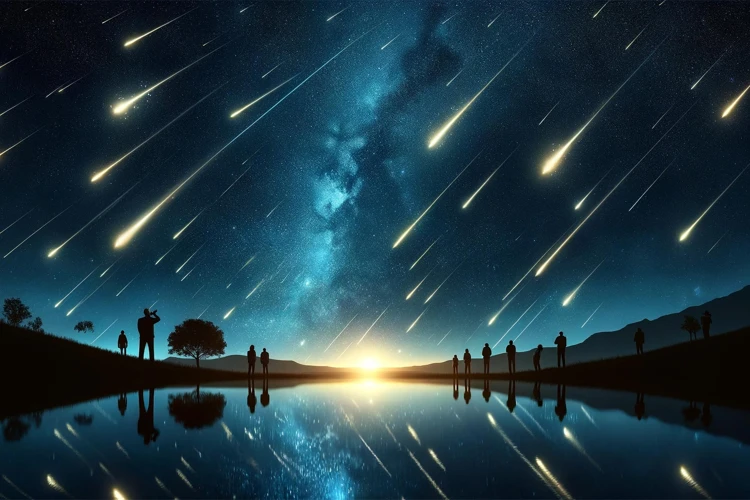
The behavior of meteor showers is a complex and intricate phenomenon that continues to puzzle scientists. One mystery that astronomers have been trying to unravel is the radiant point of meteor showers. The radiant point is the apparent location in the sky from which the meteors seem to originate. While it is generally believed that the radiant point is determined by the direction of the meteoroid’s motion, the exact mechanism that causes this alignment is still not fully understood. Numerous factors such as Earth’s atmosphere, the presence of gravitational forces, and the trajectory of the meteoroid all contribute to the positioning of the radiant point. Another intriguing aspect of meteor shower behavior is the variations in meteor trajectories. While some meteors follow a straight path, others display erratic movements, changing direction or even appearing to “bounce” in the atmosphere. Scientists are actively studying these variations to better comprehend the dynamics of meteoroids entering Earth’s atmosphere. By observing and analyzing these behaviors, astronomers hope to gain insight into the composition, speed, and other characteristics of meteoroids. Understanding the behavior of meteor showers is crucial not only for unraveling the mysteries of these cosmic events but also for advancing our knowledge of the larger solar system and its numerous celestial bodies.
2.1 The Radiant Point Mystery
One of the enduring mysteries surrounding meteor showers is the phenomenon known as the radiant point. The radiant point refers to the specific area in the sky from which the meteors appear to originate during a meteor shower. While it is widely understood that the radiant point is a result of Earth’s atmosphere intersecting with the debris trails left by comets or asteroids, the exact mechanisms behind its formation are still not fully understood. Scientists have observed that the radiant point tends to be consistent from year to year for a particular meteor shower, suggesting a stable source of meteors. However, the exact location and size of the radiant point can vary within a shower, leading to ongoing investigation into what factors influence its behavior. Some theories propose that the radiant point may be influenced by the velocity and angle of the meteoroids as they enter Earth’s atmosphere. Others suggest that gravitational forces from celestial bodies, such as the Moon or Jupiter, may play a role in determining the location of the radiant point. Further research and observations are needed to shed light on this intriguing mystery and unravel the intricacies of the radiant point phenomenon during meteor showers.
2.2 Variations in Meteor Trajectories
The behavior of meteor showers becomes even more puzzling when we consider the variations in meteor trajectories. While most meteors appear as swift, straight streaks across the sky, some exhibit erratic, zigzagging paths. These variations in meteor trajectories have perplexed scientists for decades. One possible explanation for these unpredictable movements is the presence of atmospheric conditions and winds that can cause the meteoroids to veer off their initial paths. Additionally, the angle at which the meteoroids enter Earth’s atmosphere can significantly influence their trajectories. Meteors that approach the atmosphere at shallow angles may skim the upper layers, producing long-lasting trails and spreading the debris over larger regions. On the other hand, steeper angles can result in meteors that burn up quickly, leaving behind shorter trails. The size and composition of the meteoroids can also contribute to variations in trajectories. While larger meteoroids tend to produce brighter and more dramatic meteors, their larger mass makes them more resistant to atmospheric forces, leading to a straighter trajectory. In contrast, smaller meteoroids are more susceptible to atmospheric drag, causing them to experience more significant deviations in their paths. Despite years of observation and analysis, scientists are still working to understand the underlying factors responsible for the variations in meteor trajectories. Their research aims to shed light on the complex dynamics at play during meteor showers and unravel the mysteries that continue to baffle us.
Unexplained Phenomena
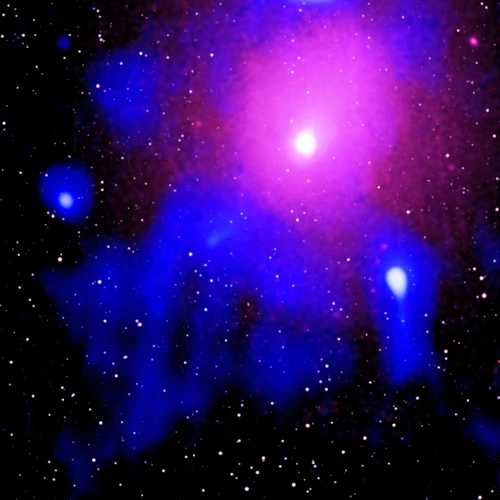
Unexplained phenomena surrounding meteor showers continue to perplex astronomers and leave them with more questions than answers. One such mystery is the occurrence of outbursts and meteor storms. While some meteor showers follow predictable patterns with a consistent number of meteors per hour, there are instances when a sudden increase in activity occurs, resulting in an outburst or meteor storm. These intense bursts of meteors can be short-lived or last for extended periods, defying conventional explanations. Scientists are still uncertain about the precise mechanisms behind these outbursts and meteor storms, making them a fascinating area of study in meteor shower research. Another enigmatic phenomenon is the persistent trains and fireballs observed during meteor showers. These are characterized by long-lasting glowing trails left behind by larger meteoroids as they burn up in the atmosphere. While the mechanism of persistent trains is thought to be due to the excited gases in the meteoroid’s wake, the exact conditions and factors that contribute to their formation and duration remain uncertain. The occurrence of fireballs, which are exceptionally bright and highly visible meteors, also presents a captivating yet unresolved puzzle. Delving deeper into these unexplained phenomena will shed light on the intricate processes and dynamics involved in meteor showers, further deepening our understanding of these celestial mysteries.
3.1 Outbursts and Meteor Storms
Outbursts and meteor storms are fascinating and mysterious phenomena associated with meteor showers. While most meteor showers follow predictable patterns and display a consistent number of meteors per hour, there are occasions when these celestial events exhibit sudden increases in activity, resulting in outbursts or meteor storms. During these episodes, the number of visible meteors can dramatically exceed the expected rates. Outbursts are often short-lived events that can last for a few minutes or hours, while meteor storms can persist for longer periods, sometimes even days. The cause of these heightened meteoric activities is still not fully understood by scientists. One theory suggests that outbursts and meteor storms occur when Earth encounters a denser section of the meteoroid stream, resulting in a higher rate of meteors burning up in the atmosphere. Another hypothesis proposes that gravitational interactions with other celestial bodies, such as planets or asteroids, may disturb the meteoroid stream, causing an influx of debris into Earth’s path. These explanations, however, do not account for all instances of outbursts and meteor storms, leaving scientists searching for further answers. Some notable examples of meteor storms in history include the Leonid meteor storm of 1833 and the Perseid meteor storm of 1993. The study of these extraordinary events continues to provide valuable insights into the behavior and dynamics of meteor showers.
3.2 Persistent Trains and Fireballs
Persistent trains and fireballs are intriguing phenomena often associated with meteor showers. During certain meteor shower events, observers sometimes witness a phenomenon known as a persistent train. These are glowing trails of ionized gas that remain visible for several seconds or even minutes after a meteor passes through the atmosphere. The persistence of these trains can be attributed to the high velocities at which meteoroids enter Earth’s atmosphere, causing ionization of the surrounding air molecules. As a result, the gas remains luminous for an extended period, creating a stunning visual display. Fireballs, on the other hand, are exceptionally bright meteors that produce intense flashes of light, often rivaling or even surpassing the brightness of Venus. These spectacular events are caused by larger and more massive meteoroids entering the atmosphere. The intense heat generated during the entry process causes the meteoroid to vaporize, leading to the release of a tremendous amount of energy. Fireballs can leave a lasting impression on observers due to their brilliance and the sense of awe they inspire. Scientists continue to study persistent trains and fireballs to better understand the physical processes involved in meteor entry and to gain insights into the composition and properties of meteoroids. The ongoing research aims to shed light on these captivating phenomena and enhance our understanding of meteor showers as unique and captivating celestial events.
The Role of Dust Particles
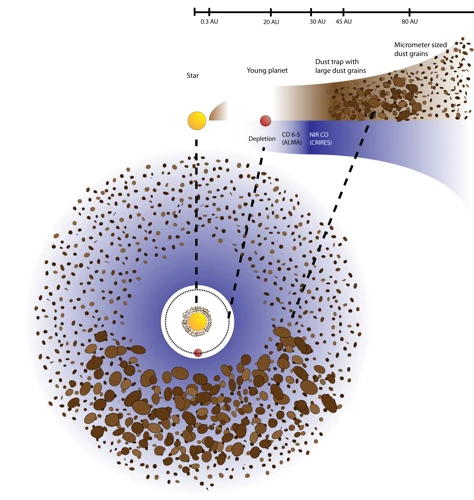
The role of dust particles in meteor showers is a fascinating aspect of these celestial phenomena. Meteoroids, the fragments that enter Earth’s atmosphere during meteor showers, are primarily composed of dust particles, along with other materials such as rocky debris and metals. The composition of these meteoroids can vary significantly, ranging from delicate grains of dust to larger, more robust particles. The composition of dust particles within meteoroids can provide valuable insights into their origins and evolution. By analyzing the elemental composition of dust particles recovered from meteor showers, scientists can gain a better understanding of the processes that shape our solar system. Dust particles also play a crucial role in the formation of meteor trails, also known as persistent trains. These glowing remnants created by the ablation of meteoroids can persist in the atmosphere for several seconds or even minutes following a meteor event. The luminosity of these trails is a result of the incandescent glow produced by the surrounding dust particles as they collide with air molecules. The interaction between meteoroids and the Earth’s atmosphere can result in the creation of fireballs – exceptionally bright meteors that appear explosively bright. The presence of dust particles within meteoroids contributes to these awe-inspiring phenomena. Gaining a deeper understanding of the role of dust particles in meteor showers is crucial in unraveling the mysteries surrounding these captivating celestial displays. To learn more about the composition and behavior of meteoroids, read our article on “The Role of Meteor Showers in Space Research.”
4.1 Composition of Meteoroids
When it comes to understanding meteor showers, one key aspect to consider is the composition of the meteoroids themselves. Meteoroids, the small rocky or metallic objects that enter Earth’s atmosphere during meteor showers, can vary greatly in composition. Scientists have found that the majority of meteoroids are made up of rocky materials, such as silicates and metals like iron and nickel. However, there is also evidence to suggest that some meteoroids contain more complex and diverse compositions, including organic compounds and even traces of water. These findings raise intriguing questions about the origins of these meteoroids and how they have evolved over time. One theory suggests that some meteoroids may originate from the outer regions of the solar system, such as the Kuiper Belt or the Oort Cloud, which could explain the presence of volatile substances and organic compounds. Understanding the composition of meteoroids is crucial for unraveling their origins and shedding light on the processes that have shaped our solar system. With ongoing advancements in spectroscopy and elemental analysis techniques, scientists are making significant strides in characterizing the composition of meteoroids and gaining valuable insights into their enigmatic nature. To learn more about meteoroids and their significance in space research, check out our article “The Role of Meteor Showers in Space Research.”
4.2 Dust Trails and Orbital Resonance
The presence of dust trails and the phenomenon of orbital resonance serve as intriguing factors in understanding the behavior of meteor showers. Dust trails are a crucial component of meteor shower activity, formed by the disintegration of meteoroids as they enter Earth’s atmosphere. These trails consist of fine particles that can linger in space for extended periods. When Earth’s orbit intersects with these dusty remnants, we witness meteor showers. However, what makes this interaction even more fascinating is the concept of orbital resonance. Orbital resonance occurs when the gravitational influence of a planet or moon perturbs the orbit of a meteoroid, leading to a periodic enhancement of meteor shower activity. The most well-known example of orbital resonance is the Perseid meteor shower, which occurs every August when Earth passes through the debris left by the comet Swift-Tuttle. The gravitational force of Jupiter ensures that the orbit of Swift-Tuttle remains stable, aligning the comet’s dust trails with Earth’s orbit at regular intervals, causing the Perseids to peak consistently each year. This intricate relationship between dust trails and orbital resonance enhances our understanding of the cyclical nature of meteor showers and the predictability of their peak activity. To learn more about the impact of dust trails and orbital resonance on meteor showers, read our comprehensive guide “The Role of Meteor Showers in Space Research.”
Scientific Observations and Studies
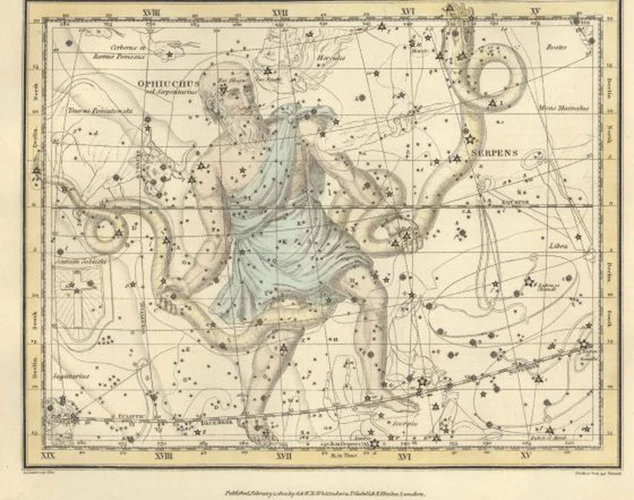
Scientific observations and studies play a crucial role in deepening our understanding of meteor showers. One important tool used by researchers is radar tracking. Radar allows scientists to detect and track the movement of meteoroids in real-time, providing valuable data on their size, velocity, and trajectory. By analyzing radar echoes, scientists can gather information about the composition and structure of meteoroids, as well as their behavior in the Earth’s atmosphere. This data helps in determining the origin of meteor showers and provides insights into the dynamics of their formation and evolution. Spectroscopy is another powerful technique used in meteor shower research. By analyzing the light emitted by meteors, scientists can identify the chemical elements present in the meteoroids. This information helps in determining the composition of meteoroids and sheds light on their origins. Elemental analysis also allows scientists to study the variations in meteoroid compositions within a particular shower and across different showers. The combination of radar tracking and spectroscopy provides a comprehensive understanding of the physical properties and behavior of meteoroids. By analyzing these scientific observations and conducting detailed studies, researchers continue to uncover new insights into the mysteries of meteor showers and deepen our understanding of these captivating celestial events.
5.1 Radar Tracking and Echoes
Radar tracking and echoes play a crucial role in studying meteor showers, offering valuable insights into their behavior and characteristics. Radar systems use radio waves to detect and track meteoroids as they enter Earth’s atmosphere. By emitting radio waves towards the sky and analyzing the reflected signals, scientists can determine the speed, trajectory, and size of meteoroids. The radar echoes produced by meteoroids provide data on their density, composition, and atmospheric interactions. This information helps scientists understand the processes involved in meteoroid disintegration and the formation of meteor showers. Radar observations can detect meteors that are not visible to the naked eye, enabling a more comprehensive study of meteor shower activity. Radar data can be used to create meteoroid orbits, identify meteor showers’ sources, and analyze variations in their activity over time. Scientists also use radar measurements to study the influence of atmospheric conditions, such as wind patterns and temperature, on meteoroid trajectories. With the advancement of radar technology and its widespread application, radar tracking continues to contribute significantly to our understanding of meteor showers and their enigmatic nature.
5.2 Spectroscopy and Elemental Analysis
Spectroscopy and elemental analysis play a crucial role in unraveling the mysteries of meteor showers. By studying the light emitted or absorbed by meteoroids as they enter Earth’s atmosphere, scientists can gain valuable insights into their composition and origin. Spectroscopy involves the measurement of the different wavelengths of light, or spectra, emitted by meteoroids. Each element or compound in a meteoroid produces a unique spectral signature, akin to a fingerprint, which allows scientists to identify the presence of certain elements or compounds in the meteoroid. This enables researchers to determine the chemical composition of meteoroids, shedding light on the materials that make up these cosmic visitors. Additionally, elemental analysis provides further information about the type and abundance of elements present in meteoroids. By understanding the elemental makeup of meteoroids, scientists can gain insights into their origins, such as whether they originated from comets, asteroids, or other celestial bodies. This information helps researchers trace the evolution and history of our solar system. The application of spectroscopy and elemental analysis in meteor shower research allows scientists to unlock the secrets hidden within these celestial visitors and deepen our understanding of the cosmos.
The Future of Meteor Shower Research
As scientists continue to unravel the mysteries surrounding meteor showers, the future of meteor shower research holds great promise. One avenue for exploration lies in space missions and exploration. Sending specialized probes or spacecraft to study meteoroids and their behavior can provide invaluable data and insights. By directly observing meteoroids in space, researchers can gather information about their composition, structure, and trajectories, contributing to a deeper understanding of these cosmic visitors. In addition to space missions, collaboration amongst astronomers is crucial for advancing meteor shower research. Sharing data, observations, and findings across the global astronomical community can lead to breakthroughs and new discoveries. International collaborations, such as the International Meteor Organization, facilitate this cooperative approach, allowing scientists to pool resources and expertise. By working together, scientists can tackle complex questions and gain a more comprehensive understanding of meteor shower behavior. The future of meteor shower research is bright, with exciting possibilities on the horizon. Continued exploration, technological advancements, and global scientific collaboration will undoubtedly bring us closer to unraveling the remaining mysteries surrounding meteor showers. To stay updated on the latest developments in meteor shower research and upcoming meteor showers, be sure to visit our article on the “Role of Meteor Showers in Space Research.”
6.1 Space Missions and Exploration
Space missions and exploration have played a vital role in advancing our understanding of meteor showers. Sending spacecraft to study meteoroids and their behavior has provided valuable insights into the mysteries surrounding these celestial phenomena. One notable mission is NASA’s Stardust spacecraft, which encountered Comet Wild 2 in 2004 and collected samples of cometary dust. By examining the composition of these dust particles, scientists can gain valuable information about the origins and evolution of comets, shedding light on their role in meteor showers. Another pioneering mission was NASA’s Deep Impact, which intentionally crashed a probe into Comet Tempel 1 in 2005. This impact generated a tremendous amount of data, helping scientists understand the structure and composition of comets on a deeper level. More recently, the European Space Agency’s Rosetta mission successfully orbited and landed a probe on Comet 67P/Churyumov-Gerasimenko. The mission provided unprecedented data on the comet’s physical properties and allowed scientists to study its interaction with the solar wind, further enhancing our knowledge of comets and their connection to meteor showers. These space missions and explorations have opened up new avenues for scientific research and have paved the way for future missions that will continue to deepen our understanding of meteor showers.
6.2 Collaboration Amongst Astronomers
Collaboration amongst astronomers plays a crucial role in advancing our understanding of meteor showers and their mysteries. By pooling their expertise, resources, and data, scientists can make significant strides in unraveling the complexities of these celestial phenomena. One way in which astronomers collaborate is through international organizations such as the International Meteor Organization (IMO) and the International Astronomical Union (IAU). These organizations facilitate the exchange of information and data among researchers from different countries, fostering cooperation and promoting global initiatives in meteor shower research. Collaboration also extends to the sharing of observational data, where astronomers from various observatories and institutions contribute their observations to collective databases. By pooling observational data, scientists can analyze large datasets, identify patterns, and gain insights into meteor shower behavior, such as variations in meteor trajectories and the occurrence of outbursts or meteor storms. Additionally, collaborative efforts allow for the coordination of observations during significant meteor shower events, ensuring that multiple locations are observing and recording data simultaneously. This collaboration enables scientists to study meteor showers from different vantage points, enhancing our understanding of their characteristics and shedding light on their underlying processes. Collaboration paves the way for joint research projects and expeditions, where scientists come together to conduct focused studies and experiments related to meteor showers. By combining their expertise, researchers can tackle specific unanswered questions and devise innovative approaches to studying meteor showers. Collaboration amongst astronomers serves as a powerful catalyst for advancing meteor shower research, pushing the boundaries of our knowledge and uncovering the remaining mysteries that shroud these mesmerizing cosmic spectacles.
Conclusion
In conclusion, meteor showers continue to mystify and intrigue both scientists and stargazers alike. Despite years of research, there remain unanswered questions surrounding the origins, behavior, and phenomena associated with these cosmic events. The connections between comets, the asteroid belt, and meteor showers provide valuable insights into the formation and timing of these celestial spectacles. The role of dust particles and the composition of meteoroids further contribute to our understanding of meteor shower behavior. Scientific observations and studies, such as radar tracking and spectroscopy, have shed light on these enigmatic phenomena but also raised new questions. As we look to the future, space missions and collaborations amongst astronomers hold great promise in advancing our knowledge of meteor showers. By studying these dazzling displays, we not only uncover the secrets of our universe but also cultivate a deeper appreciation for the wonders of the night sky. So, next time you witness a meteor shower, take a moment to marvel at the mysteries that still await exploration. To stay updated on the best meteor showers to look forward to, check out our article on the “Top Meteor Showers to Anticipate in 2022.”
Frequently Asked Questions
1. What causes a meteor shower?
A meteor shower occurs when Earth intersects the path of debris left behind by a comet or asteroid. When these celestial objects orbit the sun, they shed particles, known as meteoroids, along their path. When Earth passes through these debris trails, the particles enter our atmosphere and burn up, creating the visible streaks of light we see during a meteor shower.
2. How often do meteor showers occur?
Meteor showers occur regularly throughout the year, but their frequency and intensity can vary. Some meteor showers have predictable annual appearances, while others are sporadic or occur at irregular intervals. The well-known Perseids meteor shower, for example, happens every year in August, while other meteor showers may only occur once in several years.
3. Are meteor showers dangerous?
No, meteor showers are not dangerous. The meteoroids that create the shooting stars in the atmosphere are typically small and burn up completely before reaching Earth’s surface. They pose no threat to human safety.
4. Can meteor showers be seen from anywhere on Earth?
Yes, meteor showers can be observed from anywhere on Earth, as long as the sky is clear and there is little light pollution. However, the visibility and the number of meteors seen can vary depending on factors such as the observer’s location and the shower’s peak activity.
5. Why are meteor showers named after constellations?
Meteor showers are named after the constellation from which they appear to radiate, known as the radiant point. For example, the Perseids meteor shower gets its name from the constellation Perseus, as the meteors seem to originate from that area of the sky. The radiant point is not the actual source, but merely the perspective from which the meteors appear to converge.
6. How are meteor showers predicted?
Meteor showers are predicted based on past observations and mathematical models. Scientists study the orbits of comets and asteroids to determine when Earth’s path intersects with their debris trails. They also take into account factors such as gravitational interactions and orbital resonances to predict the intensity and timing of meteor showers. However, meteor showers can still vary in their actual appearance, sometimes surprising observers with unexpected outbursts or diminished activity.
7. Do all meteor showers produce the same number of shooting stars?
No, the number of shooting stars seen during a meteor shower can vary. The intensity of a shower depends on several factors, including the density of the debris trail, the speed of Earth’s encounter with the trail, and the size of the meteoroids. Some showers have higher meteor activity and are known for producing impressive displays, while others may be less active.
8. Can meteor showers be seen during the daytime?
Meteor showers are primarily observed at night when the sky is dark. However, under certain conditions, particularly during exceptionally bright meteor events or meteor storms, it is possible to see meteors during the daytime. These events are rare and often require careful observation techniques.
9. How do meteor showers differ from individual meteors?
A meteor shower is a collection of multiple meteors originating from the same debris trail and appearing to radiate from a specific point in the sky. Individual meteors, on the other hand, are sporadic and can be seen at any time of the year. Meteor showers are typically more predictable and have a higher concentration of meteors within a specific timeframe.
10. Can meteor showers help in space research?
Yes, meteor showers are of interest to space research. Studying the composition of meteoroids can provide insights into the formation and evolution of our solar system. Additionally, tracking meteor showers and their characteristics can aid in understanding the distribution of debris in space and potentially help in protecting spacecraft from collisions. To learn more about the role of meteor showers in space research, check out our article on “The Role of Meteor Showers in Space Research.”
Note: Please remember to add the corresponding hyperlink for the tenth question and its answer.








